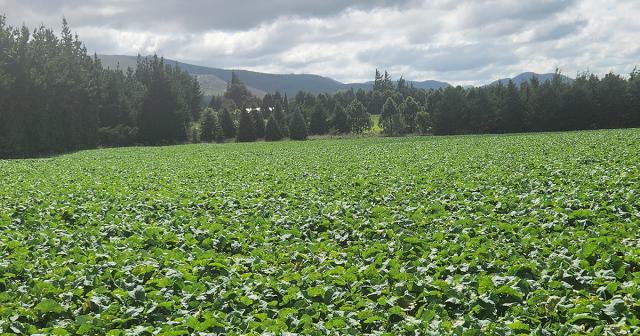With spring just around the corner, Beef + Lamb New Zealand is encouraging farmers to start planning ahead for next year’s winter forage crops.

B+LNZ’s Environmental Engagement Lead, Tom Orchiston, says while many farmers are still finishing off the last of this year’s forage crops, and looking forward to reeling up the hotwires for the last time, it is a good time to review how this winter went, consider post-grazing management and plan ahead for next winter.
“While it is still fresh in farmers’ minds, it is a good time to reflect on what went well and what can be done differently, particularly after such a challenging season in some parts of the country.”
Orchiston says it was a particularly wet start to winter in areas such as Canterbury and North Otago, but from what he observed, the majority of farmers were following best practice and doing their best to protect animal welfare and their soil and water resources.
He says best practice extends to post-grazing management which includes minimising the amount of time paddocks are left in fallow.
“This can be a problematic time as there is lot of nitrogen left in the soil in the wake of grazing winter forage crops. We encourage farmers to plant either a catch crop or some other crop or pasture as soon as they can safely get onto the paddocks to allow this nitrogen to be captured and not lost through the soil profile and into waterways.”
He says it has been encouraging to see such significant improvements in the management of intensively grazed winter forage crops in recent years and knowing how important these crops are for many farmers, it is necessary that they consider carefully what crops they are planting where.
Orchiston says factors to take into consideration include soil type, slope, location of waterways and critical source areas, access to shelter and stand-off areas, and placement of water troughs and supplementary feed.
“There are a lot of factors to consider, but done well, forage crops are a valuable part of farming systems, particularly in the south, as they provide a bulk of high-quality feed at a time of year when grass-growth is at a stand-still. They also allow parts of the farm to spelled in readiness for spring.”
He says there is a wealth of information for farmers on winter forage crops from establishment to post-grazing management on B+LNZ’s website. There is also plenty of information available on DairyNZ’s website and on Regional Councils websites.
Further resources
Read more about winter grazing on the Knowledge Hub.